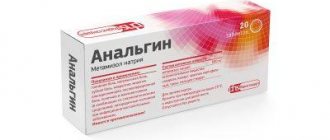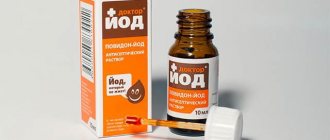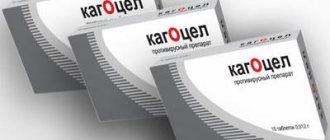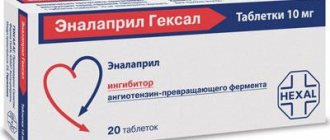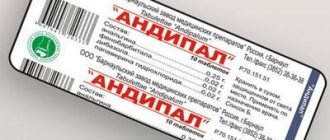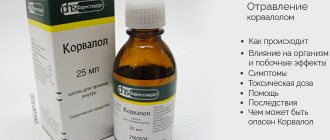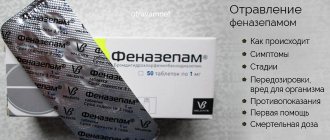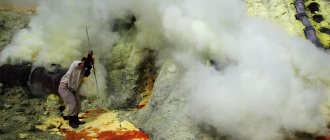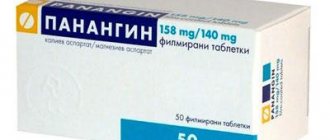Synthetic antipsychotics are quite popular in modern medicine. They are prescribed not only in the presence of serious mental disorders, but also to solve fairly simple problems: insomnia, anorexia nervosa, psychosomatic diseases. Therefore, patients and doctors do not always realize the importance of correctly calculating the dosage of drugs.
The most popular and widely used synthetic antipsychotic in the CIS is haloperidol. This is not the commercial name of the drug, but its main active ingredient. Therefore, the trade names of drugs based on it vary.
Description of the drug
The medication Haloperidol is a neuroleptic; the active substance of the same name is a butyrophenone derivative. Available in the form of powder, tablets or solution for parenteral administration. It has such pharmacological actions as:
- antipsychotic;
- neuroleptic;
- antiemetic;
- sedative.
The mechanism is based on the blockade of dopamine-sensitive receptors located in parts of the brain. Thus, Haloperidol eliminates neurological and psychotic disorders, suppresses personality changes, the appearance of delusions, and hallucinations.
The substance binds well to blood proteins, the maximum concentration when taking tablets is achieved on average after 4-5 hours, when administered intramuscularly - after 15 minutes. All enzymatic transformations occur in the liver, breakdown products are excreted in bile and urine.
Indications for use
Most often, the drug is used for neurological and mental disorders. Haloperidol is prescribed for the following diseases:
- emotional and motor arousal;
- psychopathy;
- schizophrenia;
- chronic alcoholism;
- acute psychosis;
- paranoia;
- stuttering;
- vomiting and hiccups that persist for a long period of time;
- psychosomatic disorders;
- Huntington's chorea.
The drug can be used both in emergency situations for the purpose of sedating the patient, and for long-term treatment of pathology.
Contraindications
According to the instructions for use, Haloperidol has a whole list of contraindications, which include:
- individual intolerance to the components of the drug;
- severe toxic impairment of the functional activity of the central nervous system organs;
- drug-induced coma;
- Parkinson's disease;
- pyramidal and extrapyramidal disorders;
- epilepsy;
- depression;
- cardiovascular failure in the stage of decompensation.
The medication is prescribed with great caution to patients with a history of glaucoma, thyrotoxicosis and similar disorders of the thyroid gland, decreased liver or kidney function. It is forbidden to use during pregnancy and breastfeeding, as the drug negatively affects the growth and development of the baby.
Complications and side effects
Haloperidol can cause a lot of negative consequences. All of them are described below in table form.
| Organ system | Signs |
| Nervous | Decreased visual acuity |
| Difficulty swallowing and chewing | |
| Headache | |
| Sleep disturbance | |
| Emotional and motor arousal (reverse effect) | |
| Anxiety | |
| Depression | |
| Euphoria | |
| Change of consciousness | |
| Spasm of skeletal muscles, mainly of the neck, back, face | |
| Cardiovascular | Increased or decreased blood pressure |
| Increased heart rate | |
| Arrhythmia | |
| Respiratory | Spasm of bronchioles, larynx |
| Digestive | Jaundice |
| Stool disorder (diarrhea, constipation) | |
| Nausea | |
| Vomit | |
| Decreased or lack of appetite | |
| Increased saliva secretion | |
| Genitourinary | Gynecomastia |
| Menstrual irregularities | |
| Decreased urine output | |
| Pronounced libido | |
| Skin | Acne - rare |
Additionally, excessive sweating, short-term loss of consciousness, an allergic reaction up to anaphylactic shock may occur.
Interaction with other medications
When combined with other drugs, it has different pharmacological effects. Haloperidol increases the effects of:
- opioid analgesics;
- sleeping pills;
- tricyclic antidepressants;
- anesthetic substances.
The active component is able to reduce pharmacodynamics:
- antiparkinsonian drugs;
- adrenaline and its derivatives;
- indirect anticoagulants;
- amphetamines;
- bromocriptine.
With such combinations, the risk of developing side effects and complications increases, which significantly affects the patient’s well-being.
Composition and analogues
The standard drug contains one and a half milligrams of haloperidol, to which potato starch, magnesium stearate, lactose and other organic or mineral compounds are added at the production stage.
There are a number of analogues that differ slightly in their composition, but also act on the organs of the nervous system.
Decanoate
It is a salt modification of haloperidol, which is used for intramuscular administration. Available in the form of an oil solution containing additional benzyl alcohol. The medicine is intended exclusively for adults. The dose and duration of treatment are selected individually.
For elderly patients, a small initial volume of the active component is recommended; it is increased gradually throughout therapy.
Richter
Haloperidol with a similar prefix is sold in the form of tablets in blister packs. The amount of the active component is different, ranging from 1.5 to 5 milligrams.
Contraindications remain the same; when specifying side effects, special attention is paid to:
- drowsiness;
- akinesia;
- parkinsonism.
Take orally half an hour before meals. The initial dose is usually 1.5–2 mg, which is increased to 7–8 mg per day. The total volume is divided into 2-3 doses. The course of therapy is 3 months. Can be used in the treatment of children under three years of age, here the amount is calculated based on body weight.
Ratiopharm
Contains haloperidol and is available in the form of tablets, powder for dilution and solution for droppers. It has absolutely the same pharmacological effect. According to indications, contraindications and side effects, it does not differ from the initial form.
Drug interactions
Combined use with psychotropic drugs (tranquilizers, tricyclic antidepressants), opioid analgesics, anesthetics and alcohol causes severe depression of the central nervous system.
Simultaneous treatment with the drug with anticoagulants, first generation antihistamines (Suprastin), antiparkinsonian drugs, adrenaline, amphetamine reduces the therapeutic effect of the drugs.
The combined use of Haloperidol with antidepressants increases their concentration in the blood plasma and increases the toxicity of the medications. Lithium preparations during drug therapy can cause irreversible neurointoxication.
Important! Combining the drug with Buprion increases the risk of epileptic seizures.
Permissible dosage for the use of antipsychotics
According to treatment standards, the volume of the active component is selected by the doctor individually, taking into account the characteristics of the body, the type and course of the pathology.
With the development of acute psychosis, adults are recommended to take 5–10 mg, administered intravenously or intramuscularly. The maximum daily dose should not exceed 40 mg.
During motor agitation caused by chronic alcohol intoxication, the same amount of medication is indicated.
In children, the treatment is somewhat different; a solution is used here, and a child under 5 years of age is given 2 drops of the drug orally, after five years - 5 drops twice a day.
Reviews
Natalya, 35 years old I have been suffering from psychosis since I was 14 years old, I periodically stay in a psychiatric hospital during exacerbations, I take Haloperidol, other antipsychotics do not help.
The drug has a good effect, psychosis goes away, but constant use causes an inability to sit in one place and convulsive involuntary movements of the tongue.
Sergey, 40 years old. Diagnosed with paranoid schizophrenia at the age of 23. The use of Haloperidol relieved the attacks of exacerbation, but there were attacks of catatonia - he froze for 2-3 hours.
As the dose was increased, the attacks intensified, and the medication was replaced with another antipsychotic. Now I have a long-term remission, there are no exacerbations, I feel normal.
Anton, 35 years old, drank a lot, began to experience alcoholic delirium, aggravated by hallucinations. The relatives took him to a psychiatric hospital, where, after detoxification of the body, they prescribed this medicine according to the instructions.
The drug relieved the psychosis, but he could not sit still and was constantly dizzy. I was discharged and stopped drinking, and now I feel good.
Taking into account the feedback from doctors and patients, it is necessary to take the drops with caution.
Doctors
Pavel Anatolyevich, 47 years old, Ryazan.
I prescribe Haloperidol for mental disorders. The drug is effective, but has side effects that interfere with work that requires concentration. I prescribe drops in the minimum dosage.
Anna Sergeevna, 52 years old, Yekaterinburg.
I prescribe the drug to eliminate vomiting and nausea caused by psychosomatic disorders. Short-term treatment is not addictive, but I do not recommend suddenly stopping taking the drops. It is important to avoid withdrawal syndrome, so it is necessary to choose a competent therapeutic course.
Igor Alekseevich, 41 years old, Pskov.
Drops are effective for hiccups, vomiting and psychosis. Due to many contraindications, I prescribe it in cases of extreme necessity, when correction of disorders with other medications does not produce results.
Patients
Olga, 25 years old, Astrakhan.
I took haloperidol for about a week. At this time I constantly felt sleepy, although I began to feel much calmer. At the end of the course, the condition did not worsen. I didn’t feel any withdrawal symptoms.
Alexander, 37 years old, Syzran.
The drops were prescribed by a psychotherapist. I took the drug in combination with other medications for the treatment of alcoholism. I had a headache for some time and wanted to sleep all the time, but then the symptoms disappeared.
Oleg, 45 years old, Krasnodar.
Haloperidol helped cope with anxiety, panic attacks and nausea, which was often present during attacks. After a few days I felt much better. In combination with psychotherapy, drops give good results.
Effectively helps with hallucinatory disorders, relieves non-existent visions and psychosis. Reviews of Haloperidol characterize the drug as a mild, proven antipsychotic.
Injections are often used for mental patients. However, the medicine is considered outdated, has a large number of strong side effects (drowsiness, inhibition), and can cause extrapyramidal disorders.
The price of the medicine is reasonable.
Haloperidol poisoning
Unfortunately, overdose of antipsychotics in medical practice is common, due to three main reasons:
- medical negligence, prescribing an inadequate dose of the drug;
- use of the drug in the presence of liver and kidney damage without taking into account these diseases;
- stored in a place accessible to children, after which the baby tastes the tablets.
The most severe complication of an overdose is death, the probability of which is very high.
Intoxication in a child
Statistics say that a larger percentage of all cases of such diseases are poisoning with antipsychotic drugs in children under the age of three, which is largely due to the inattention of parents. In addition, some forms of Haloperidol are created exclusively for adults, and their use in treating children is strictly prohibited. But these requirements and recommendations in the instructions are ignored.
Lethal dose
It all depends on the individual sensitivity of the body to the active component of the medication. A fatal case was recorded after 500 mg of a tranquilizer. For a child, the dangerous dosage is 250 mg.
Possible complications
In case of an overdose of haloperidol, complications such as:
- High intensity headaches;
- Nausea;
- Dysfunction of the cardiovascular system;
- Dysfunction of the endocrine system;
- Development of diseases of the gastrointestinal tract;
- Skin problems;
- Mental development disorder (if intoxication occurred in childhood).
Homeopathic remedies for poisoning
In addition, a long stay in a coma can have a negative effect on the functionality of the brain.
It is important to know that the most serious consequence of poisoning with this drug is death. Therefore, you should never prescribe this drug to yourself. And always follow all doctor’s instructions regarding the dosage and regimen of taking this drug.
Symptoms and stages of poisoning
The clinical picture develops three or four hours after an overdose. Consists of several stages:
- First. There is indifference to what is happening around, a pronounced desire to sleep. The victim becomes lethargic and lethargic. Speech and breathing rhythm remain within normal limits.
- Second. It is characterized by deep sleep, from which it can be aroused, by reduced tendon reflexes. The breathing rate is slightly reduced.
- Third. The skin acquires a bluish tint due to hypoxia of the body. The patient does not react in any way to external stimuli, which corresponds to coma.
- Fourth. There can be two options: the patient is either recovering, or complications are developing.
The third stage of overdose is considered the most clinically significant and dangerous, from which it is quite difficult to remove a person; he can die in a matter of minutes.
Indications
Indications for use of the drug are:
- Alcohol addiction is a strong, uncontrollable desire to drink a drink containing ethyl alcohol;
- Psychosis of unspecified etiology without the presence of organic brain lesions - inadequate perception of the surrounding world;
- Schizophrenia - personality disorder, strange behavior and thinking, disturbance of emotional status;
- Delusional disorders are a condition in which a person is visited by strange, inexplicable thoughts and ideas;
- Manic episode - an increase in both mental and physical activity, an increase in mood for no apparent reason, the presence of manic ideas;
- Mental retardation of unspecified origin;
- Behavior disorder - an inadequate reaction to external stimuli, actions motivated by inexplicable anger and rage;
- Stuttering is a speech disorder with repetition of syllables and sounds;
- Unreasonable hallucinations are images before a person’s eyes produced by one’s own consciousness without any reason;
- Huntington's disease is a progressive chronic disease of the nervous system, the development of which is determined at the genetic level;
- Anorexia due to neurological disorders - exhaustion, lack of appetite, refusal to eat;
- Childhood autism is a pathology that develops against the background of organic brain lesions, which are accompanied by disturbances in speech, thinking, and further socialization processes;
- Derilius - darkened consciousness;
- Chronic pain syndrome - neuralgia, aching limbs due to disruption of the nervous system;
- Prolonged hiccups.
Urgent Care
All measures described in this section are aimed at facilitating the well-being of the victim and reducing the risk of developing negative consequences. The order of manipulations is as follows:
- rinse the stomach with a weak solution of soda or potassium permanganate and induce a gag reflex by pressing on the root of the tongue;
- give the sorbent available on hand; it is better to use the medicine in the form of a powder or gel;
- wait for the medical team.
All other actions must be performed by specialists. Very often it is necessary to defibrillate the heart and connect the patient to a ventilator. At the moment, no specific antidote has been developed.
Who is prone to overdose
Who most often suffers from an overdose of this drug:
- People suffering from mental disorders and seeking quick recovery from their illness;
- Small children who put everything in their mouths;
- Teenagers suffering from drug addiction.
Principles of treatment
Therapy for overdose is aimed at quickly removing the patient from a comatose state and detoxifying the body. Blood purification is most often carried out using saline solutions for intravenous administration and diuretics. Sometimes they resort to plasmapheresis and hemodialysis.
Treatment is predominantly symptomatic; drugs are selected individually, taking into account the characteristics of the person and the course of the disease.
Prevention
Among the preventive measures aimed at preventing an overdose of antipsychotics, the following have been adopted:
- Keep medications out of the reach of children.
- Follow the course of treatment prescribed by your doctor and follow your medication schedule.
- Check with your doctor about the use of other medications, especially sedatives.
- Avoid drinking alcohol.
People with hypersensitivity need to monitor the condition of the body and seek medical help at the first signs of intoxication.
Pharmacodynamics
Has a powerful antipsychotic effect, moderate sedation ( chlorpromazine 50 mg is equivalent to 1 mg haloperidol
). The mechanism of the antipsychotic action of haloperidol is most likely associated with the blockade of dopamine receptors in the mesocortex and limbic system. Blocks dopaminergic activity in the nigrostriatal pathway, which is associated with disorders of the extrapyramidal system (extrapyramidal disorders).
It has weak central α-adrenergic blocking, antihistamine and anticholinergic effects, disrupts the process of reuptake and deposition of norepinephrine.
Haloperidol in small doses inhibits dopamine receptors in the trigger zone of the vomiting center, which is why it is used to treat vomiting (for example, during chemotherapy)[4]. Blockade of D2 receptors in the hypothalamus leads to a decrease in body temperature and an increase in prolactin production (which is associated with breast enlargement and milk secretion in both sexes).
Price
The cost depends on the release form and manufacturer:
- 5 ampoules of 1 ml each Haloperidol Decanoate can be purchased for an average of 360 rubles.
- Identical packaging of Haloperidol Richter ampoules costs several times less - about 100 rubles.
- Russian-made ampoules are the most budget option; 5 ampoules cost an average of 60 rubles.
The price for a package containing 50 tablets ranges from 37 to 72 rubles.
The antipsychotic drug is dispensed from pharmacies strictly according to a doctor's prescription.
Side effects
The medicine may cause side effects:
- parkinsonism;
- akathisia;
- dystonic symptoms;
- neuroleptic malignant syndrome;
- temperature increase;
- daytime sleepiness;
- dyskinesia;
- lethargy;
- general malaise;
- fatigue;
- insomnia;
- migraine;
- arrhythmia;
- cardiopalmus;
- hypotension;
- leukocytosis;
- leukopenia;
- jaundice;
- skin rash;
- dry skin;
- nausea;
- vomiting;
- diarrhea/constipation;
- loss of appetite;
- weight loss, up to anorexia;
- impotence in male patients;
- urinary retention;
- hyponatremia;
- lack of need for fluid (as a result of which there is a high risk of dehydration);
- blurred vision.
According to clinical data, 92% of patients experience one or more adverse reactions during therapy. Their appearance is not a reason to discontinue the drug, but may help reduce the dosage.
Neurotoxic metabolites
Haloperidol metabolizes hepatocytes in rats and humans via CYP–3A4 to the neurotoxic metabolites pyridinium 4-(4-chlorophenyl)-1-(4-fluorophenyl)-4-oxobutylpyridinium (HPP) and 4-(4-chlorophenyl)-1–(4 -fluorophenyl)-4-hydroxybutylpyridinium (RHPP). HPP and RHPP are lipophilic compounds with half-lives of 67.3 hours and 63.3 hours, respectively.
HPP is a structural analogue of the more widely known Parkinson's disease neurotoxin MPP and its precursor MPTP. Unlike MPP, HPP does not depend on MAO-B to metabolize toxic species and does not require a functional dopamine transporter protein for its intracellular uptake.
Microdialysis studies have been conducted in the striatum, substantia nigra, and cortex in rats. These studies compared the neurotoxic potential of 1-methyl-4-phenylpyridinium (MPP) and HPP in dopaminergic and serotonergic neurons. HPP was shown to be a less potent neurotoxin than MPP in dopaminergic neurons and displayed equivalent serotonergic neurotoxicity.
Disruption of corticostriatal mitochondrial complex I is pathognomonic for MPP neurotoxicity and Parkinson cell dysfunction. HPP is more potent than MPP in inhibiting mouse mitochondrial complex I with an IC50 of 12 mM for HPP and 160 mM for MPP. Long-term administration of high doses (2 and 5 mg kg) of Haloperidol in mice increased striatal nitric oxide, TNF- and caspase-3 levels.
HPP and RHPP have been found in the brains of patients taking Haldol at autopsy. A short-term 6-week study failed to find a statistically significant correlation between HPP, RHPP and extrapyramidal symptoms. A long-term retrospective study showed a significant positive correlation between HPP levels and tardive dyskinesia severity.
In what cases is medicine in drops prescribed?
The main area of use of Haloperidol drops is psychiatric practice, although sometimes it can be prescribed to eliminate vomiting, for example, during the treatment of cancer. The main indications for the use of this antipsychotic drug will be the following diseases and conditions:
- delirium, hallucinations, delirious syndromes, catatonic syndromes, thinking disorders, disorders of consciousness against the background of acute psychotic syndromes;
- psychoses of endogenous and exogenous etiology in the chronic stage;
- psychomotor agitation;
- vomit;
- stuttering.
The instructions for use contain all the necessary information about the drug “Haloperidol” (drops). The product receives good reviews from both patients and doctors, who successfully use it as a prophylactic and to suppress symptoms of psychosis and psychotic syndromes of various origins.
Abuse
See also: Use of psychiatry for political purposes in the USSR
Soviet dissidents, including medical professionals, reported the use of haloperidol in the abuse of psychiatry for political purposes. The popularity of haloperidol as a treatment for so-called “sluggish schizophrenia” was due to two reasons: painful side effects, the purpose of which was to break the will of the prisoners, and the fact that it was one of the few psychotropic drugs produced in sufficient quantities in the Soviet Union [38]. In particular, Sergei Kovalev, Leonid Plyushch and Natalya Gorbanevskaya were exposed to haloperidol[39][40].
U.S. Immigration and Customs Enforcement used haloperidol to sedate people being deported from the United States. For the period from 2002 to 2008. 365 deportees were exposed to haloperidol. As a result of a court case brought in 2008, the rules changed, and from now on haloperidol can only be used on the advice of doctors and by court order[41][42].
Pharmacokinetics
Intramuscular injections When administered intramuscularly, the drug is well and quickly absorbed with high bioavailability. Decanoate injections are for intramuscular administration only and are not intended for intravenous use. Plasma concentrations of Haloperidol decanoate peak approximately six days after injection and then decline, with a half-life of approximately three weeks.
Intravenous injections The bioavailability of intravenous injections is 100%, and the onset of action is very fast, literally within seconds. The duration of action is from four to six hours. If Haloperidol is given as a slow intravenous infusion, the onset of action is delayed and its duration is prolonged.
Plasma levels of four to 25 micrograms per liter are required for therapeutic effects. Determination of plasma levels can be used to calculate dose adjustments and check compliance, especially in patients on long-term treatment. Plasma levels above the therapeutic range may result in an increased risk of side effects or even pose a risk of Haloperidol toxicity.
Analogs
The best similar drugs based on haloperidol include:
- Senorm . It has a pronounced antipsychotic and antiemetic prolonged effect. Prescribed as maintenance therapy for patients suffering from chronic schizophrenia. It can be prescribed to patients who require a potent antipsychotic with pronounced sedative effects for treatment.
The cost of 5 ampoules is within 290 rubles.
- Halopril. An antipsychotic drug prescribed to patients with disorders with psychomotor agitation of various origins, psychosis, dementia, psychopathy, schizophrenia, depressive syndrome, hallucinations, incessant hiccups, vomiting.
The price depends on the form of release and dosage, ranging from 15 to 567 rubles.
Like the original, analogues are sold strictly according to a doctor’s prescription.
Haloperidol therapy is in great demand in psychiatry.
According to doctors, this antipsychotic drug has practically no analogues; even powerful modern drugs are incomparable in strength to Haloperidol.
The disadvantages of antipsychotics include poor tolerance in patients. It is strictly unacceptable to use the drug for self-medication; constant supervision by a specialist is required.
Animal studies
In a placebo-controlled study, groups of six macaques received olanzapine and haloperidol at therapeutic dosages for about two years. In post-mortem analysis, macaques treated with antipsychotics showed a similar decrease in both brain volume and weight, reaching 8-11%[43]. As a result of further study of preserved samples, it was found that the decrease in gray matter volume was caused primarily by a decrease in the number of astrocytes, secondarily by oligodendrocytes,[44] while the density of neurons increased, although their number remained unchanged.
Compound
The active substance is haloperidol.
The tablets contain 1.5 or 5 mg of this substance. Additional elements are: talc, potato starch, gelatin, magnesium stearate, lactose monohydrate.
1 ml of solution contains 5 mg of active substance. Additional substances are: injection water, lactic acid, methylparaben, propylparaben.
Drops from the company Ratiopharm contain 2 mg of active substance per 1 ml. Additional substances are: methyl parahydroxybenzoate, purified water, propyl parahydroxybenzoate, lactic acid.
